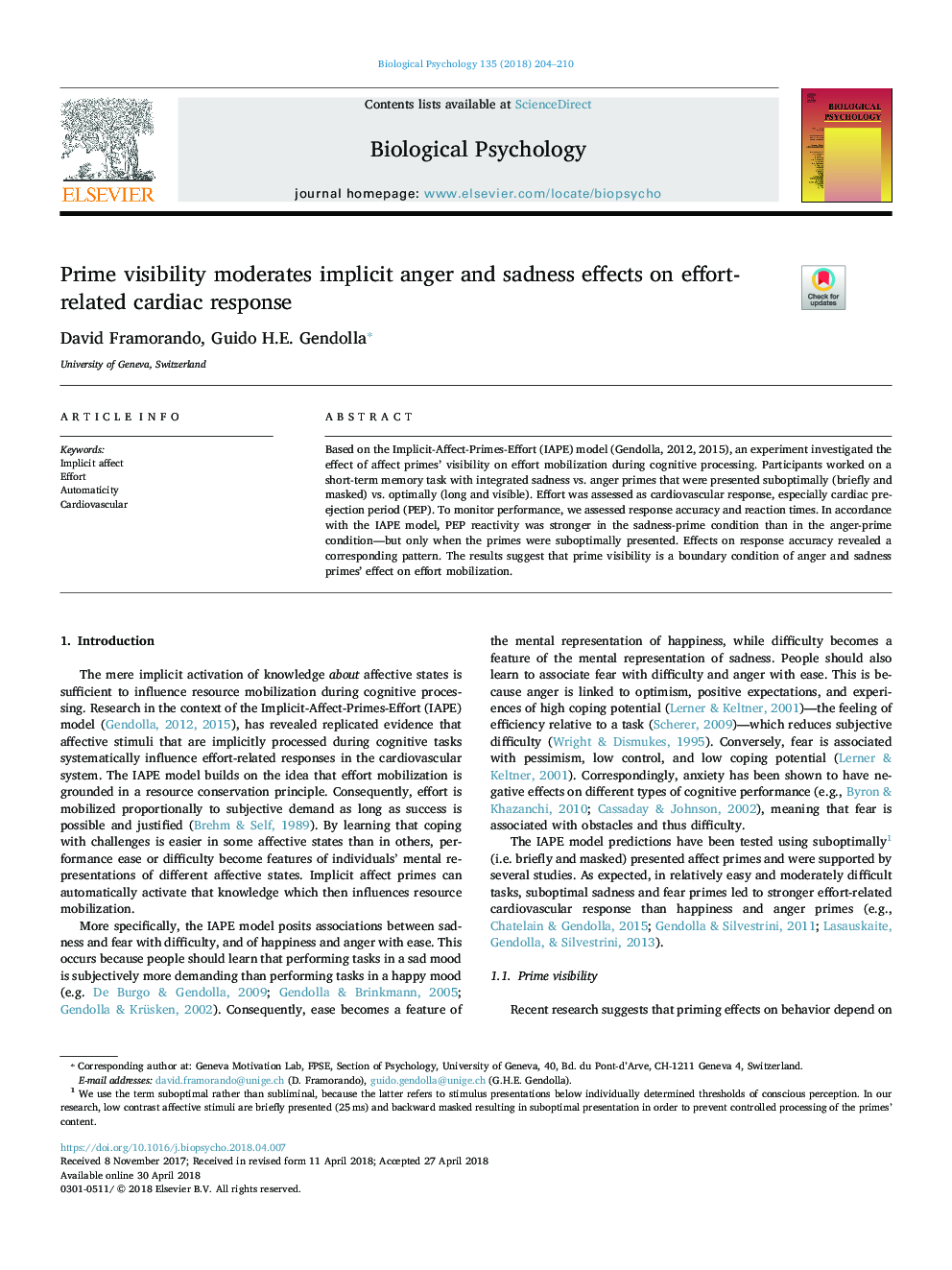| Article ID | Journal | Published Year | Pages | File Type |
|---|---|---|---|---|
| 7278146 | Biological Psychology | 2018 | 7 Pages |
Abstract
Based on the Implicit-Affect-Primes-Effort (IAPE) model (Gendolla, 2012, 2015), an experiment investigated the effect of affect primes' visibility on effort mobilization during cognitive processing. Participants worked on a short-term memory task with integrated sadness vs. anger primes that were presented suboptimally (briefly and masked) vs. optimally (long and visible). Effort was assessed as cardiovascular response, especially cardiac pre-ejection period (PEP). To monitor performance, we assessed response accuracy and reaction times. In accordance with the IAPE model, PEP reactivity was stronger in the sadness-prime condition than in the anger-prime condition-but only when the primes were suboptimally presented. Effects on response accuracy revealed a corresponding pattern. The results suggest that prime visibility is a boundary condition of anger and sadness primes' effect on effort mobilization.
Related Topics
Life Sciences
Neuroscience
Behavioral Neuroscience
Authors
David Framorando, Guido H.E. Gendolla,
